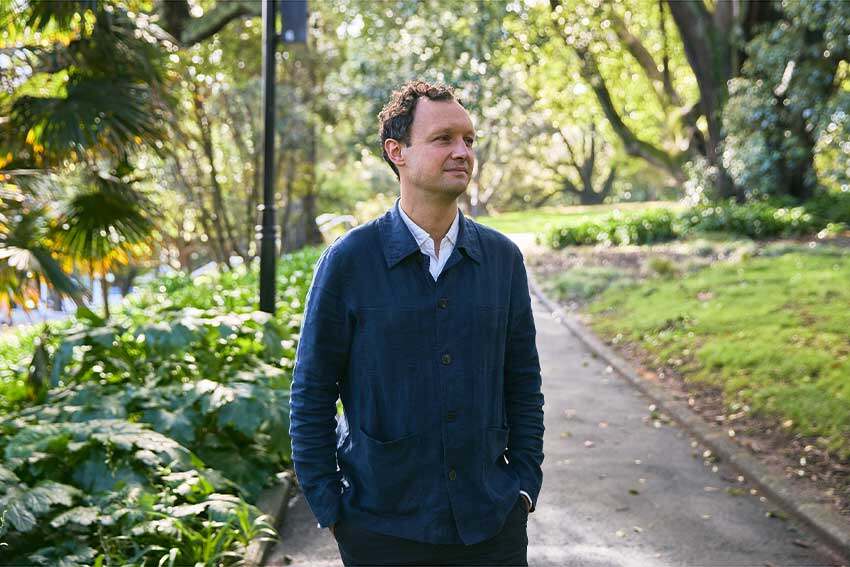AUT Senior Lecturer David Hall addresses the question of whether cities can just offset their emissions in a talk for Te Pūtahi Centre For Architecture & City Making in Christchurch on September 20, 2022. His video presentation and the transcript are below.


Can Christchurch plant its way out of climate change? Or more specifically, can it achieve net zero by compensating for its emissions – from transport, energy, industry etc – with carbon removals that come from newly planted trees.
On paper, at least, this is possible.
But in the real world, I will argue: This is not feasible. This is not fair. This is not future-proofed.
First of all, if every city in the world chose to offset its emissions by tree planting, rather than reduce its own emissions, there is simply not enough land in the world to hold all those trees.
One recent review of available scientific literature found that if we absolutely maximised the amount of vegetation all land on Earth could hold, we’d sequester enough carbon to offset about 10 years of greenhouse gas emissions at current rates. Just 10 years.
And yet the fossil-fuelled economy which is causing global heating has existed for many decades already and could conceivably exist for many more unless we make deliberate choices to decommission it. At the global scale, deep decarbonisation is a lever that we must pull, as well as reduced demand for high-emissions goods and services. Tree planting and ecosystem restoration are important parts of the picture, but it simply isn’t feasible to rely on trees alone.
However, just because everyone can’t feasibly offset their way out of the problem, this doesn’t necessarily mean that some people can’t. Perhaps some cities could rely on offsetting, as long as most other cities do decarbonise, or reduce consumption. Indeed, carbon markets are designed to enable this kind of outcome, because if demand for offsets is strong and supply is constrained, then the price of carbon credits will go up and only the wealthiest cities in the world will be able to afford to keep living lavishly, to keep lugging along three-tonnes of steel when they dash out in their Range Rover to pick up a bottle of milk from the dairy round the corner.
But this raises the issue of fairness. Should we really be enabling the world’s wealthiest cities, which are typically the cities that have contributed most to historical emissions, to carry on with business-as-usual, simply because they can afford to do so? Many will say that this isn’t fair and reasonably so. From the perspective of climate justice, it should be the places that contributed most to historical emissions who should lead the way to net-zero, giving poorer countries and poorer cities around the world a little more leeway to develop their economies.
And there’s another cause for unfairness: one which we’ve seen expressed through rural discontent over the last few years. Because land-use change which is primarily driven by carbon sequestration has major implications for the places that it occurs.
Here’s a little back of the napkin calculation. Pre-pandemic, Christchurch’s total gross greenhouse gas emissions were 2.7 million tonnes of carbon dioxide equivalent (tCO2-e). Pine forest in the Canterbury-Westland region sequesters around 20-25 tonnes of CO2 per hectare each year. So to offset the city’s emissions, we’re talking about 108,000-136,000 hectares of pine forest. If you wanted to do it in natives, then the growth rates will be much slower, so we might need three or four times more, maybe half a million hectares of land to be converted into unharvested forest for carbon farming.
That’s a lot of land use change. A lot of displacement and disruption to local communities. A lot of impacts also on rural economies because unharvested forests for carbon farming, once established, don’t create much in the way of local jobs.
A lot of people will think this outcome is unfair, if not economically self-sabotaging, and in some cases I don’t think they’ll be wrong. Personally, I think that Aotearoa New Zealand needs more forests than it currently has, and probably more forests than some farmers, like the Groundswell folk, would be comfortable with. But large swathes of unharvested, potentially unmanaged, forests is not a great outcome for local prosperity or resilience. This shouldn’t be the price for allowing city dwellers to keep their streets clogged up with Rangers, Navaras, Colarados, Santa Fes, Outbacks, Outlanders, and Defenders, nary a spot of mud on any of them. That isn’t fair, and if it’s deeply unfair, it also won’t be feasible, because people will revolt, people push back. Even if it’s technically feasible, it isn’t politically feasible because, at some point, people won’t stand for it. Groundswell is only a taste of what could come.
So it’s unfair, it’s infeasible, and it is also the very opposite of future-proofing. Recent research by climate scientist Nathanel Melia found that Aotearoa New Zealand is on track to increasingly see fire weather that is equivalent to what Australia endured during its Black Summer of 2019/2020. This will especially be a problem along the east coast of New Zealand, in Hawke’s Bay, Marlborough, Canterbury, and Otago. Is it really very sensible or prudent to be loading up these areas with monocultures of relatively flammable species like Pinus radiata?
And what about the cars, SUVs and coal burners whose right to keep emitting is produced by these at-risk forests? Well, that’s not great future-proofing either to have transport systems which are massively dependent on fossil fuels and so massively exposed to the volatility of oil prices. If you thought the invasion of Ukraine was bad for petrol prices, then I suspect that’ll be nothing compared to the spiralling costs of oil exploration and extraction, climate-related disruptions to global supply chains, and regulatory shocks as politicians are forced by scared and angry constituencies into abrupt, unplanned and messy shutdowns of fossil fuel infrastructure. Interesting times ahead.
But there is a way through all this, a pathway ahead that is more feasible, fair and future-proofed. It does involve tree planting, to be sure, but rather than focus on a single value that trees produce – namely, the value of carbon sequestration – we need to focus on all the values of trees and forest.
I’m sure Justin [speaking later in the Te Pūtahi event] will talk about the many benefits of urban trees, urban ngāhere, for social and environmental wellbeing. Also in rural landscapes, trees deliver myriad benefits, from creating natural habitat and ecological connectivity, to erosion control and flood regulation, and more. If we get the other things right, if we establish forests that are resilient and productive and repair the landscape, then carbon comes along for the ride, as a co-benefit of forests that we want to live with and care for.
Let’s face it: the carbon budget for 1.5C is due to run out later this decade, and we’re on track to exceed the carbon budget for 2C not long after. As we crash through our Paris commitments and climate damages intensify, the international community’s tolerance for offsetting is going to rapidly diminish. You can see it happening already.
We can’t afford to use trees for indiscriminate offsetting, to preserve the fossil-fuelled status quo. Instead, we need to phase down offsetting over the coming decades. What we need to do immediately is restrict offsetting to genuinely hard-to-abate emissions (which, hint hint, should not include offsets for SUVs). But over the coming decades, we need to phase out offsetting entirely so that carbon removals from forests are used to achieve drawdown, where we are taking more carbon dioxide out of the atmosphere than we are putting up there. Because achieving net-zero only prevents further warming, it lands us on a plateau. But if we don’t like the temperature that we’ve landed at, the world needs to be net-negative to turn down the global thermostat. Our natural ecosystems remain the only proven way to achieve that at scale.
But how will people pay for forests, if not by offsetting? Climate change policy needs to find ways to pay for the wider suite of benefits that forests and natural ecosystems bring. We might invest in forest restoration as a form of historical reparations, a way to right the wrongs of deforestation that violated the Treaty of Waitangi. We might invest in trees for their biodiversity and adaptation benefits, their capacity to function as natural infrastructure, to reduce the risks of floods, erosion and sedimentation. We might even – a rather old-fashioned idea – invest in trees for their timber and woody biomass, to increase the linkages between forestry and the burgeoning bioeconomy, as well as the opportunities for mass timber construction to decarbonise the built environment. It’s in this direction that we can plant our way out of at least some of the problems of climate change, but in a way that’s more feasible, more fair, and more future proofed.








































